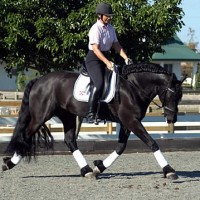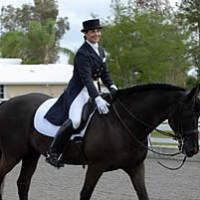 A winning attitude isn’t hard to achieve, but it does take some effort. For some reason, many people find it easier to wallow in negativity than to make the effort to turn things around and be positive. Horses aren’t like that. We don’t think about the past or the future. We just live now.
A winning attitude isn’t hard to achieve, but it does take some effort. For some reason, many people find it easier to wallow in negativity than to make the effort to turn things around and be positive. Horses aren’t like that. We don’t think about the past or the future. We just live now.
I’ve noticed Jane using the tools she’s learned and developed over the years to change her attitude. You see, even Jane has bad days. But she doesn’t stay in a bad place. She’s learned how to consciously change her thinking, and, therefore, change her experience.
One of Jane’s most powerful tools is deciding to have an attitude of gratitude. She’ll tell me how much she appreciates me, my soft coat, my powerful muscles, my long, pretty mane, and my work ethic. She’ll go on and on about how good my tempi changes are, and how wonderfully my piaffe is developing. Even when I make a mistake, she’ll tell me how grateful she is that I willingly try my best. Yes, gratitude is the fastest way to turn a bad day into a great day.
Continue reading Motivation from Moshi, by Jane Savoie →
 Charley and I used to hang out a lot together.
Charley and I used to hang out a lot together.



 Last month I taught a 4-day workshop at the USET headquarters in New Jersey right in the middle of “Frankenstorm”. I’d like to share a video from that event and mention that next Tuesday, Dec. 4, I’m going to be doing a free teleseminar to kick off an exciting “Surviving Sandy” promotion.
Last month I taught a 4-day workshop at the USET headquarters in New Jersey right in the middle of “Frankenstorm”. I’d like to share a video from that event and mention that next Tuesday, Dec. 4, I’m going to be doing a free teleseminar to kick off an exciting “Surviving Sandy” promotion.

 Love is a verb. Love is active. Jane knows that love does wonders for your winning attitude! You can’t hold a negative thought when you’re in a state of love.
Love is a verb. Love is active. Jane knows that love does wonders for your winning attitude! You can’t hold a negative thought when you’re in a state of love. October 8, 2012 – No matter where I travel, the most frequently asked questions I get are, “How do I put my dressage horse on the bit… and how do I keep him there consistently?” This concept baffles many riders. My hope here is to simplify the process for you by explaining how to give what I call “connecting aids”.
October 8, 2012 – No matter where I travel, the most frequently asked questions I get are, “How do I put my dressage horse on the bit… and how do I keep him there consistently?” This concept baffles many riders. My hope here is to simplify the process for you by explaining how to give what I call “connecting aids”.